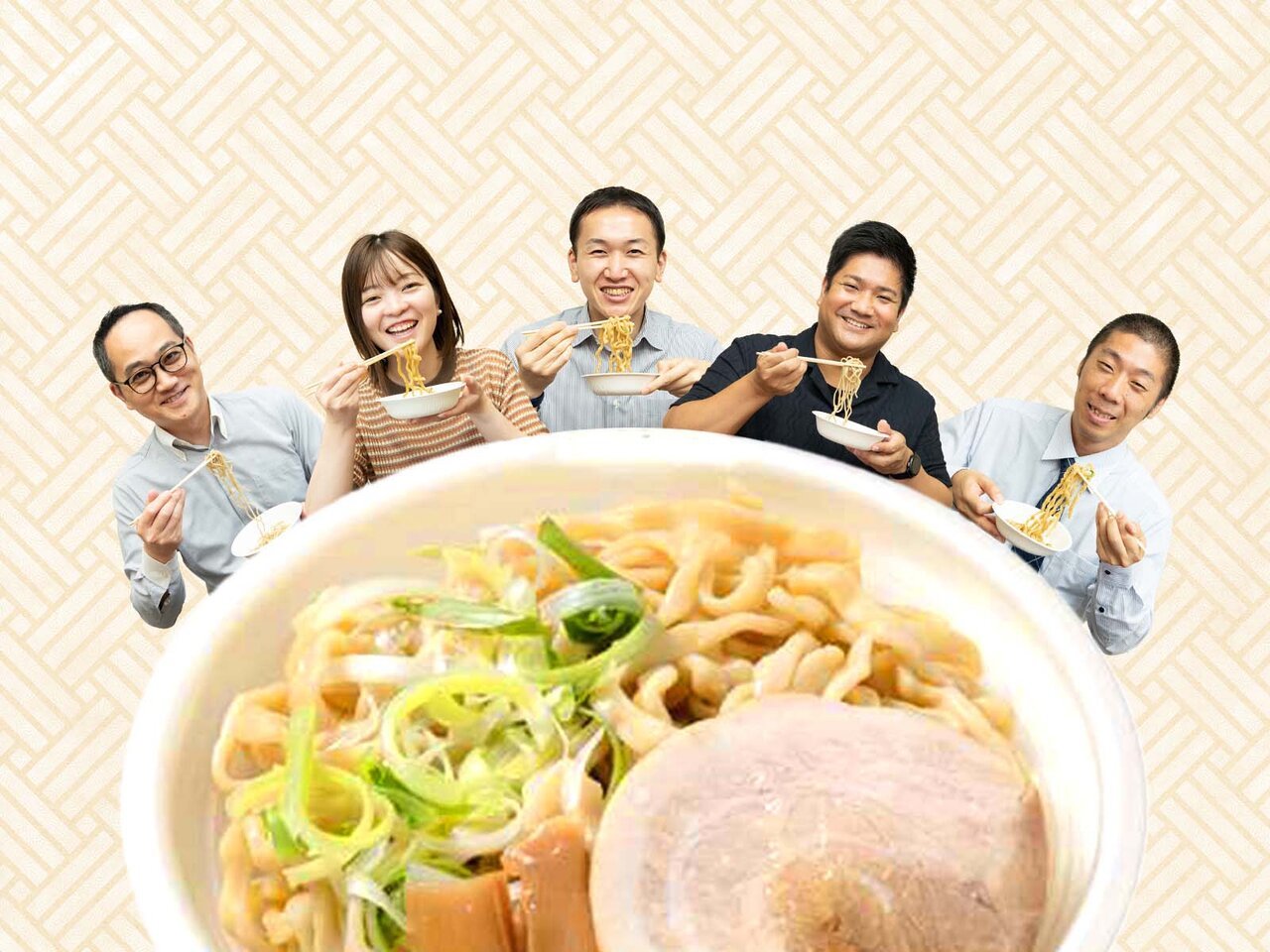
Devotion in Every Bowl: The Secret Behind the Delicious Noodle Dishes at Seven-Eleven Japan
From soba and udon to ramen, pasta, and even pho — in Japan, people don’t necessarily think about which country a noodle dish comes from. Instead, they simply choose the noodles they love. The same is true at 7-Eleven in Japan, where you can always find a noodle dish to match your mood of the day.
Yet, because noodles are such a familiar part of daily life, few people realize just how much care goes into each one. At Seven-Eleven Japan, every noodle dish — from the noodles themselves to the soup — is crafted with uncompromising attention to detail.
In this edition of Crossroads, we explore the diversity and deliciousness of Japanese noodle culture through a conversation between Yagita, who pours his passion into Seven-Eleven Japan’s noodle development, noodle-making specialist Sasaki, and three Seven-Eleven Japan employees who all share a deep love for noodles.
Meet the People We Encountered at This Crossroad

Sasaki
Deputy Manager, Noodle Development Office, New Business Department, Nissay Delica Co., Ltd.

Yagita
Chief Merchandiser of Rice/Noodle, Rice/Noodle Department, Merchandising Division, Seven-Eleven Japan.
*Affiliation at the time of the interview. Currently belongs to the Overseas Business Division.

Okazaki
OFC (Operations Field Counselor)*, Yokohama South District, Seven-Eleven Japan
* Affiliation at the time of the interview. Currently with the Delicatessen Department in the Merchandising Division, serving as an Assistant Merchandiser for Seven Premium and Fresh & Daily Food Products.
* OFCs provide management counseling to franchise owners of 7-Eleven stores.

Watanabe
Assistant Manager, DO Accounting, Tokyo District Office, Seven-Eleven Japan.

Furuhashi
Franchise Store Support Department, in charge of Labor and Welfare, Seven-Eleven Japan.
A Passion for Noodles Makes Every Bowl Delicious
— Joining us today are a noodle developer, a noodle-making specialist, and noodle enthusiasts. With such a wide variety of noodles available, what types do you usually enjoy in your daily meals?

Watanabe
For me, it’s hiyashi chuka (cold ramen)! My whole family loves noodles, so we often find ourselves standing in front of the 7-Eleven noodle section, wondering, "Which one should we get today?"

Yagita
That’s wonderful to hear! Today, we’re joined by Sasaki, a noodle-making specialist from Nissay Delica, and we’ve also prepared some of our new noodle products — so please look forward to them!

Furuhashi
I’m absolutely crazy about Mōko Tanmen Nakamoto! So I’m really looking forward to today. By the way, I’ve actually visited 7-Eleven stores in all 47 prefectures of Japan—and of course, I made sure to check out the local noodle selections in each one.

Okazaki
Getting to try new products before anyone else is such a treat—both as an OFC and as a noodle lover! My favorites are ramen and tsukemen (dipping noodles), and I often spend my weekends visiting different noodle shops.
When it comes to 7-Eleven products, I really love the Chinese soba supervised by Tomita. I’ve actually visited their restaurant before, and I think it’s amazing that something this delicious can be enjoyed so easily and conveniently.
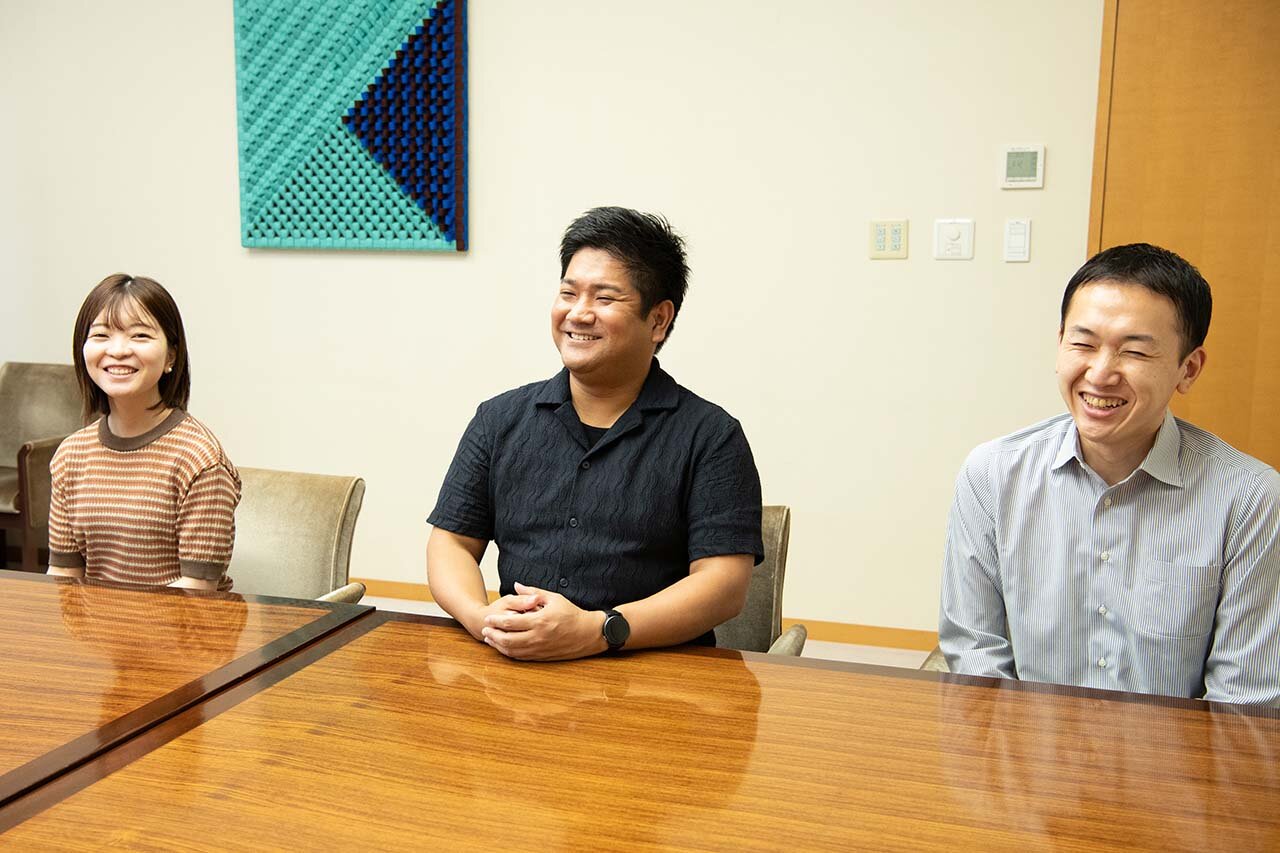

Sasaki
Although I’m involved in noodle production, I rarely get the chance to hear directly from customers, so I’m truly honored to be here today.
I’ve also visited Tomita myself, and I was amazed by both the hospitality—like that of a fine Japanese restaurant—and the exceptional flavor. I definitely hope people will not only enjoy the 7-Eleven products but also experience the authentic taste at the main restaurant someday.

Furuhashi
I’d love to hear more about what it means to be a noodle-making specialist. Do you actually make the noodles by hand yourself?

Sasaki
Since our noodles are machine-made, we don’t actually make them by hand. However, to become a noodle-making specialist, you need to fully understand the characteristics of the machinery, ensure consistent flavor, and be able to fine-tune the settings according to each type of noodle.
You also have to possess deep knowledge about noodles and the ability to judge the quality of taste. Only after passing a series of rigorous tests are you officially certified as a noodle-making specialist.
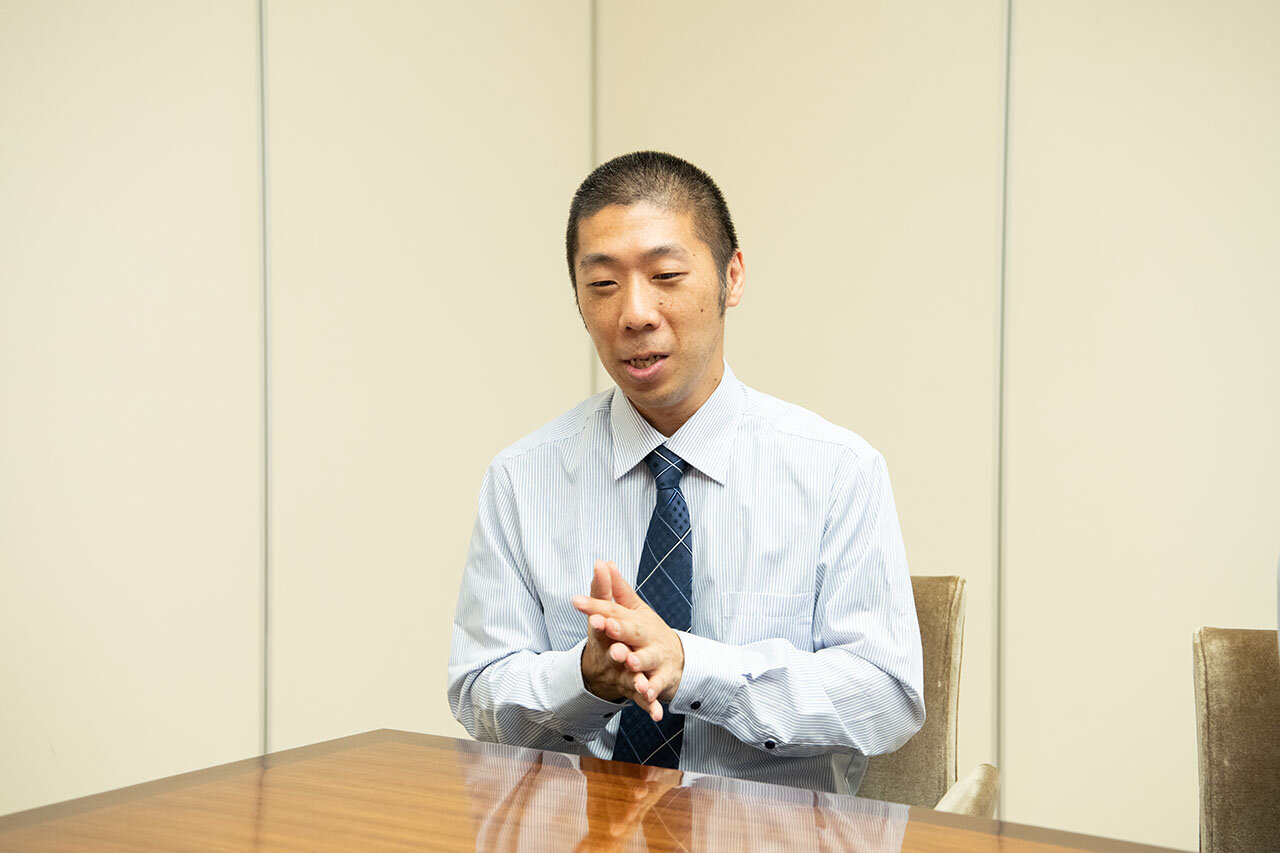

Yagita
That’s quite a challenging process, actually. There are countless factors to check — the temperature when mixing the flour, the temperature after kneading, the thickness and width of the noodles, and how they’ll turn out once boiled.
Even though the noodles are made by machine, the level of precision required is incredibly high. It took us years before we were finally able to place certified noodle-making specialists across the country.

Okazaki
We’ve been talking about noodles so far, but as a ramen lover, I can’t overlook the soup—it’s such an essential part of the experience. I think it’s amazing that 7-Eleven’s noodles and soups are always delicious, no matter when you buy them. What kind of challenges do you face in maintaining that consistent quality?

Sasaki
Since the soups are made by other partner manufacturers, I can’t go into too much detail about them—but as we often say, "noodles are alive." Their flavor subtly changes depending on factors like the room temperature or the temperature of the water. Of course, we can’t use that as an excuse, so we work hard every single day to make sure we deliver the same great taste, no matter the conditions.

Watanabe
Whenever a new product comes out, I usually buy it at the store and think casually, "Oh, the noodles and soup go really well together this time." But now I realize just how much care and creativity go into making it. I’m happy that from now on, I’ll be able to enjoy my noodles even more, knowing the passion behind them.
Pursuing Even Better Noodles: Seven-Eleven Japan’s New Noodle Creations
— Our conversation has gone from the noodles we usually eat to what goes on behind the scenes.
Today, we’ve prepared two dishes for you to try: the Kakiage Soba, which was renewed in October, and the new Shoyu Ramen that’s set to launch soon.
So, without further ado—how do they taste?
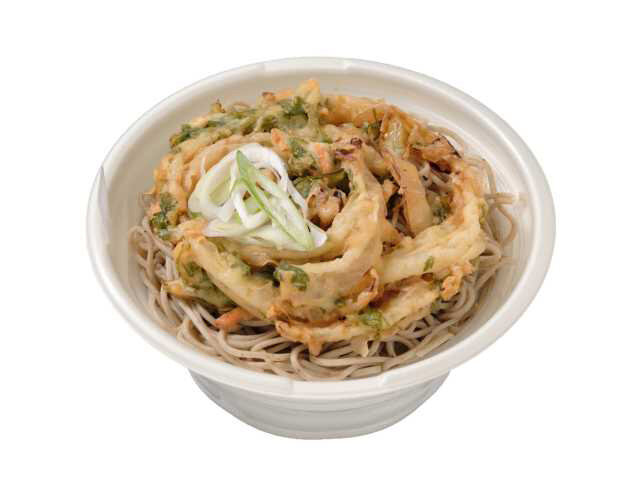
Kakiage Soba: A Deep, Savory Flavor Enhanced by Bonito Broth
kakiage – a type of tempura fritter made with mixed vegetables and seafood

Okazaki
I started with the kakiage soba, and it has a hint of sweetness with a strong, rich broth flavor. It actually reminds me a little of oden!
* oden – a Japanese hot pot dish of various ingredients simmered in a light soy-flavored broth
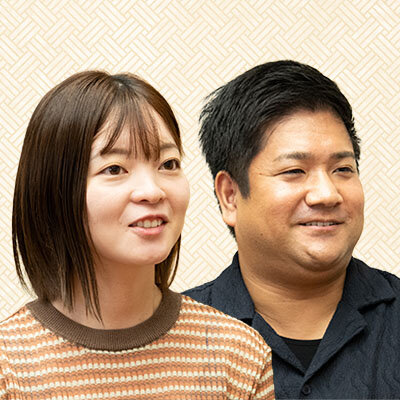
You’re right—it does have a touch of sweetness!
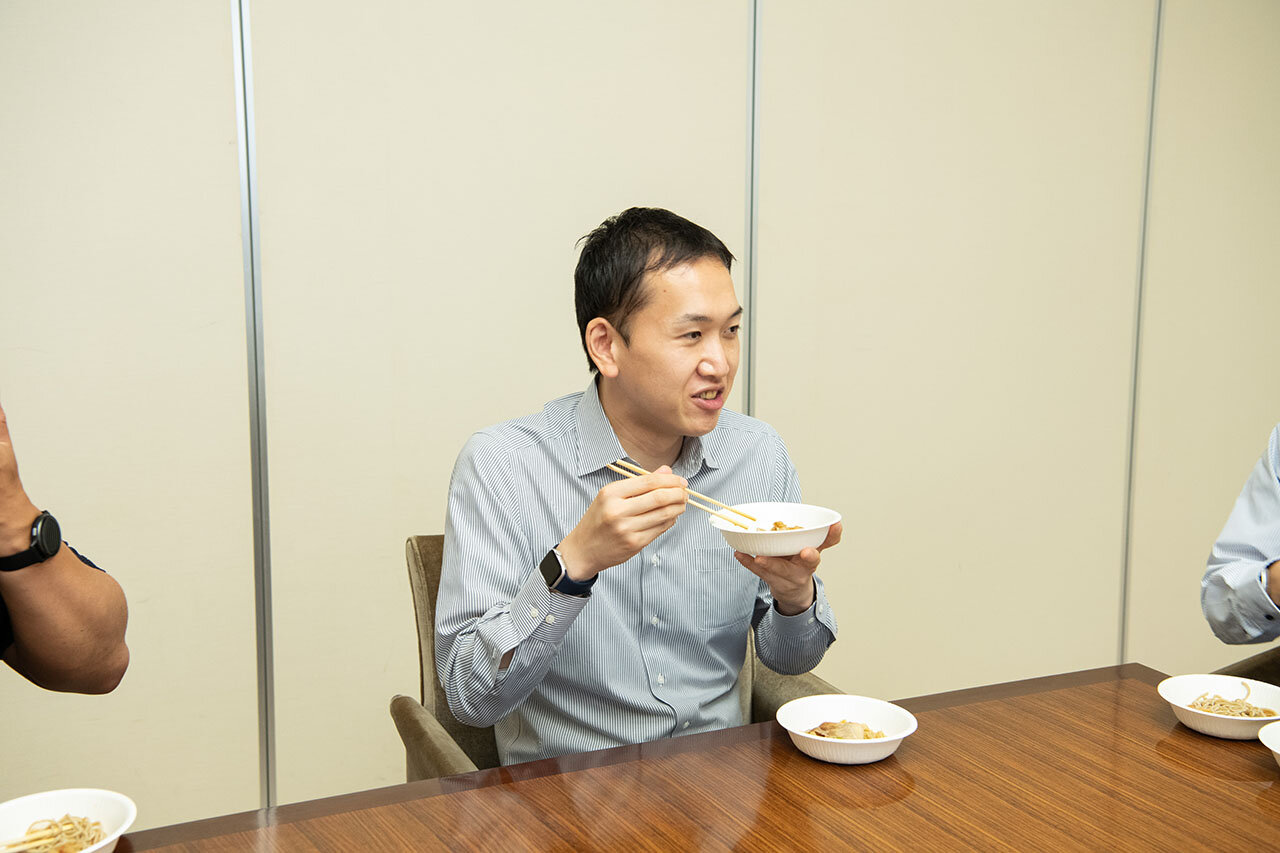

Yagita
You’ve got sharp taste! Until now, the flavor leaned more toward soy sauce, but this time we adjusted it to bring out the richness of the dashi (broth) instead.

Sasaki
For the noodles, we use a blend of coarsely and finely milled buckwheat flour. The finely milled flour gives a smooth texture and pleasant swallow, while the coarser grind adds a more pronounced bite. By balancing the two, we bring out the full aroma of the soba.
Also, since the broth has been adjusted this time, we made the noodles slightly thinner to improve how well they blend with the soup.

Yagita
We’d love to hear your thoughts on the shoyu ramen too, right, Sasaki?
This time, we went with thicker noodles that offer a really satisfying bite—the look and texture are hard to believe they were made by machine. In the past, we focused on developing products that would appeal to a wide range of customers, but for this one, we decided to take a bold step and create something that really feels new and distinctive.
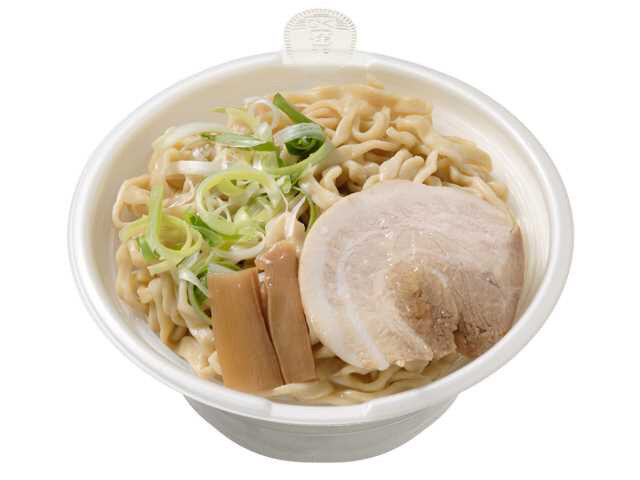

Okazaki
I really love thick noodles that soak up and cling to the soup—and today’s noodles are exactly like that!

Watanabe
The noodles have such a great chewy texture—the more you bite, the better they taste. I know I shouldn’t, but I honestly feel like drinking up every last drop of the soup!
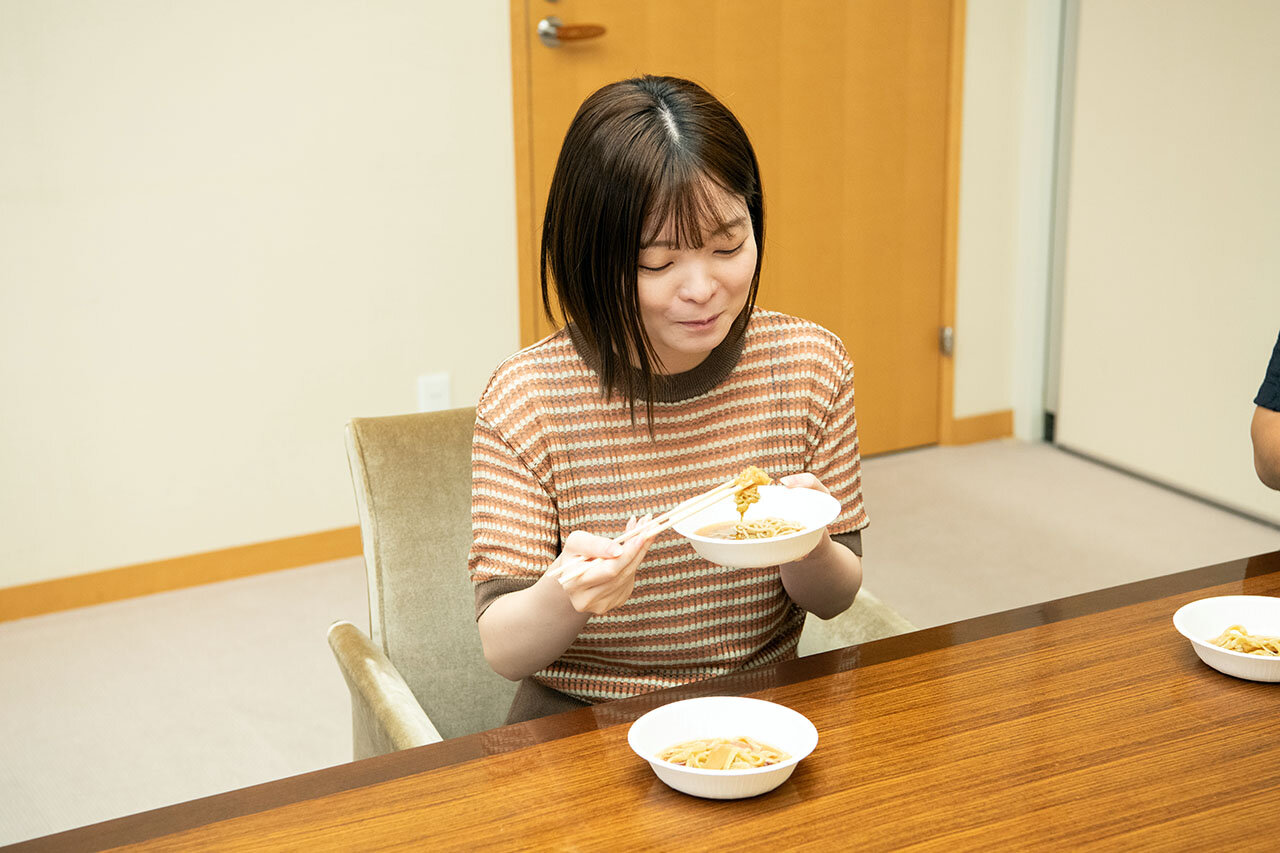

Sasaki
You may have noticed the noodles are slightly wavy—that’s because we changed the way they’re cut. Okazaki, since you often visit different noodle shops, I imagine you might have felt that the texture is quite close to hand-made noodles.

Yagita
What’s even more fascinating is how the way the noodles are cut actually changes how the soup clings to them. Depending on whether the rough or smooth side has more surface area, the taste and texture can feel completely different. It’s truly a deep and intricate world.
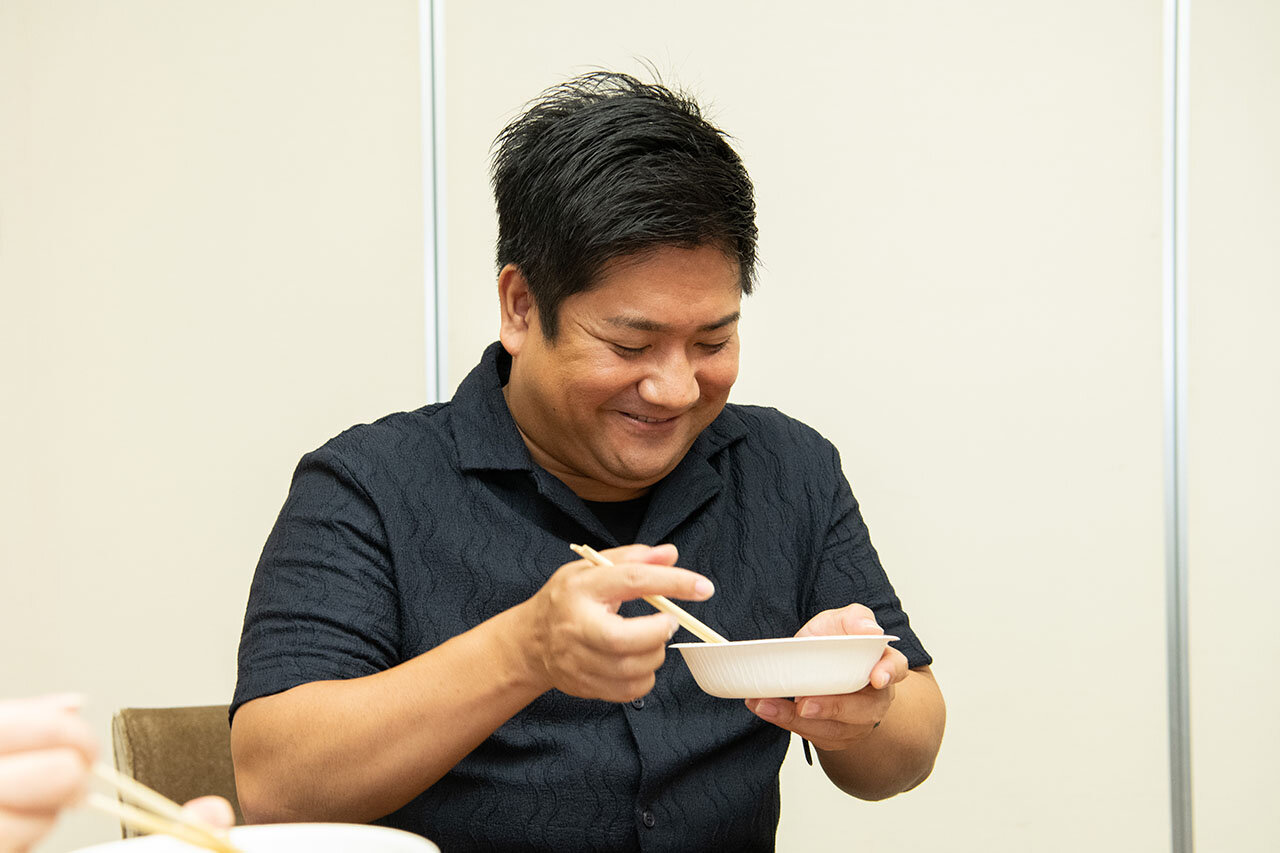

Furuhashi
Wow, this is really delicious.
Why Do Japanese People Love Noodles So Much?
—The passion for noodles is evident among everyone here! Today we’ve tried ramen and soba, but in Japan, people also enjoy pasta, pho, and so many other kinds of noodles. From a global perspective, that openness to such a variety of noodle dishes is quite a unique aspect of Japanese food culture, isn’t it?

Yagita
The world’s three major grains are rice, wheat, and corn, and each region’s food culture has developed according to its climate and soil conditions. In Japan, rice has long been the staple food, but I think the increase in wheat imports over time helped establish and expand our noodle culture.

Watanabe
I think one of the best things about noodles is how convenient they are—you just boil them and they’re ready to eat. They’re perfect for busy days or for families with many members. And in summer, dishes like hiyashi chuka or somen (thin noodles made from wheat) are so refreshing. Whether served hot or cold, noodles are delicious either way—that’s part of their charm.

Yagita
Absolutely!

Furuhashi
I used to live in Gunma prefecture, where wheat cultivation is quite common. That’s why pasta dishes are popular there, and livestock and dairy farming—which also use wheat as feed—are thriving as well. Listening to Yagita’s explanation really made me realize how food culture develops in connection with local agriculture.

Okazaki
Speaking of culture, I think Japanese people are deeply accustomed to eating something together with a broth or soup—like miso soup, nabe (Japanese hot pot dish), curry rice, or ochazuke. Maybe that’s why we naturally gravitate toward foods with a smooth, easy-to-swallow texture—something that feels pleasant as it goes down.
* ochazuke – rice served with green tea or broth poured over it
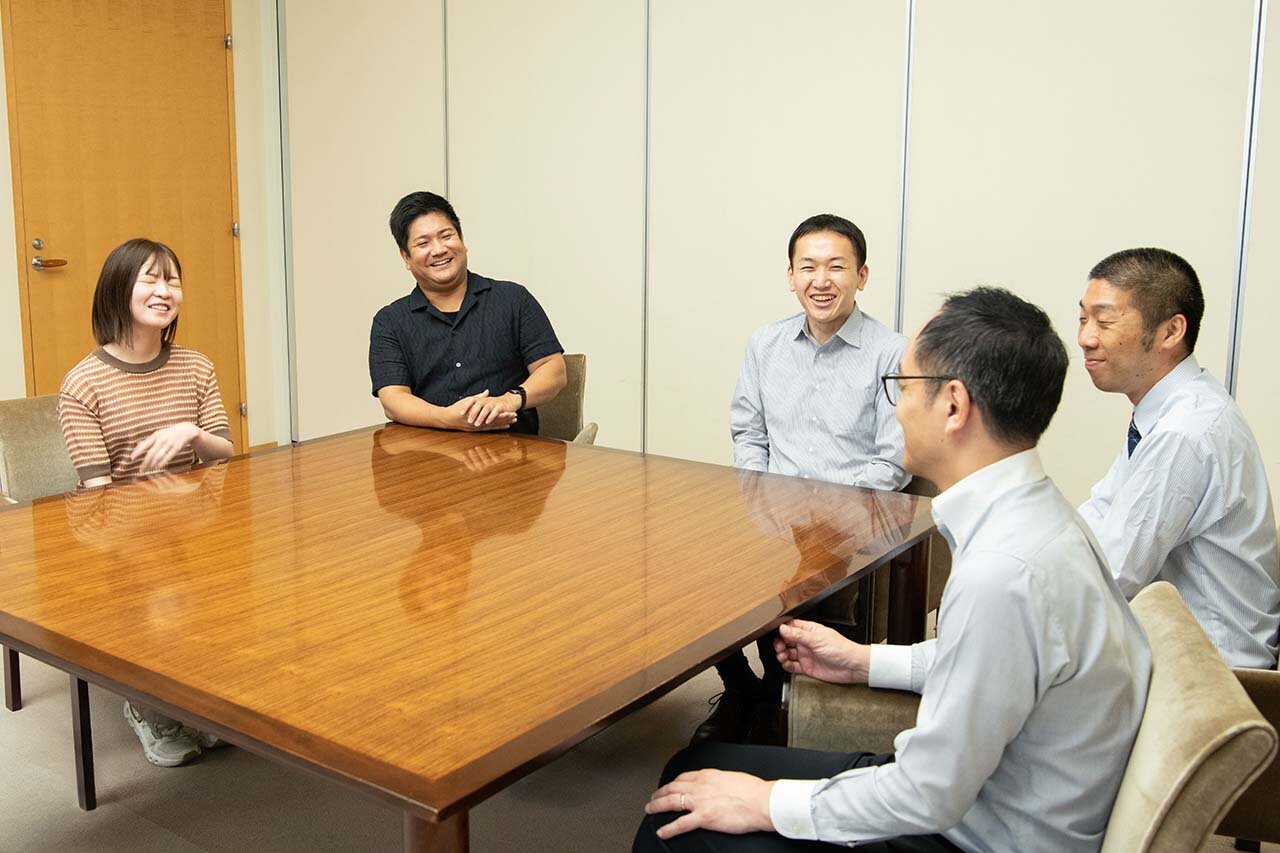

Sasaki
It’s great that noodles can be enjoyed either hot or cold and can be served quickly at the table. But above all, I think it’s the advancement of noodle-making technology that made this possible. Making noodles by hand is a lot of work, yet now you can easily buy pasta or instant noodles anytime.
What’s truly remarkable about Seven-Eleven Japan, I think, is not only how it has made noodle dishes so widely accessible, but also how deeply it commits to perfecting every aspect of the noodles themselves.
Noodle Lovers and Experts Talk About the Future of Noodles
— It’s true, being able to enjoy noodles anytime you like is something unique to convenience stores. Recently, there seem to be more and more sophisticated products, and the variety just keeps expanding. Finally, could you share what you hope to see in the future of noodle dishes?

Okazaki
Even at ramen shops, dishes that use cheese are becoming quite popular. I’d love to see more noodle products that make generous use of cheese. I think pairing it with mazesoba (soupless mixed noodles) would be great—the cheese flavor would coat the noodles and add even more depth to the taste.

Furuhashi
Listening to both of you today, I could really feel the depth of your passion and dedication. That’s exactly why I’d love to see more local specialty noodles or famous restaurant flavors recreated as cup noodles or ready-to-eat meals. They’re easy to try, and I think it would encourage even more people to fall in love with noodles.

Watanabe
There was a time when I ate ramen about five times a week, but I started to worry about the calories… I’d love to see a healthier ramen made with something like harusame (glass noodles) and plenty of vegetables. I think female customers, in particular, would really appreciate that.
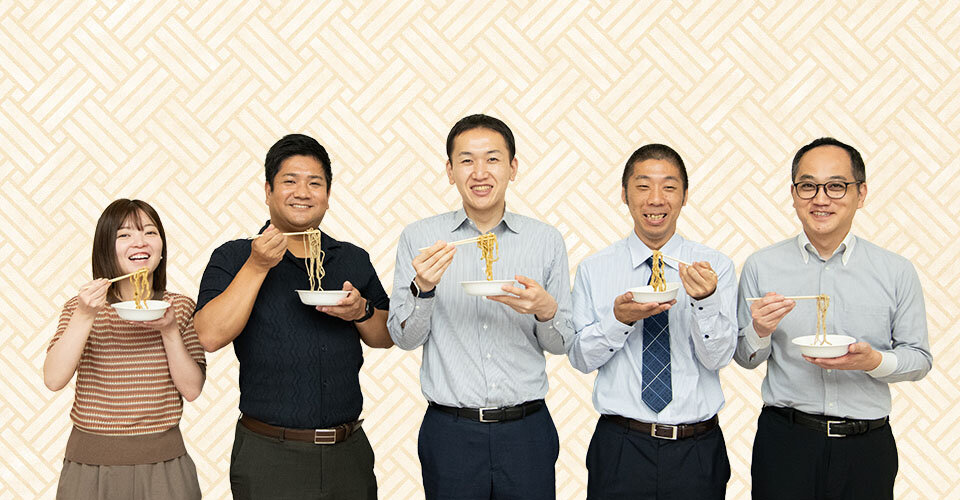

Sasaki
I’d like to continue pursuing the ultimate flavor of soba. There’s a saying that good soba depends on the "three freshly made" principles—freshly milled, freshly kneaded, and freshly boiled. The hardest part to reproduce is the "freshly milled" aspect, since it’s closely tied to distribution logistics. But someday, I hope we can deliver soba that truly embodies all three to our customers.

Yagita
These days, with so many dining options available and competition growing fiercer, the product life cycle is becoming shorter and shorter. That’s why I think people are now looking for products that spark curiosity—something that makes them want to explore.
If customers can take a familiar dish and think, "Wait, this tastes a little different—in a good way," then I believe they’ll grow even fonder of 7-Eleven.
I’ll soon be transferring to the Overseas Business Division, but I hope to carry with me—and share abroad—the passion for noodles that I’ve cultivated together with Sasaki.
This Crossroads brought together the passion of true noodle lovers and the dedication of those who craft them. Perhaps it offered you a glimpse into the possibilities hidden within the noodles you casually pick up every day—and the care that goes into each one.
So next time you reach for a bowl of noodles, which one will you choose?
This text has been translated using an automatic translation tool.
Related articles




